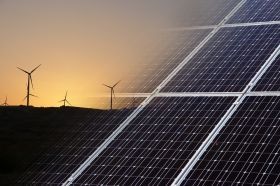In their paper, published as a manuscript this week in Renewable Energy, the researchers propose three different methods of providing consistent power among all energy sectors – transportation; heating and cooling; industry; and agriculture, forestry and fishing – in 20 world regions encompassing 139 countries after all sectors have been converted to 100 percent clean, renewable energy. Jacobson and colleagues previously developed roadmaps for transitioning 139 countries to 100 percent clean, renewable energy by 2050 with 80 percent of that transition completed by 2030. The present study examines ways to keep the grid stable with these roadmaps.
“Based on these results, I can more confidently state that there is no technical or economic barrier to transitioning the entire world to 100 percent clean, renewable energy with a stable electric grid at low cost,” said Jacobson, who is also a senior fellow at the Stanford Precourt Institute for Energy and the Stanford Woods Institute for the Environment. “This solution would go a long way toward eliminating global warming and the 4 million to 7 million air pollution–related deaths that occur worldwide each year, while also providing energy security.”
Read more at Stanford University
Photo credit: seagul via Pixabay


